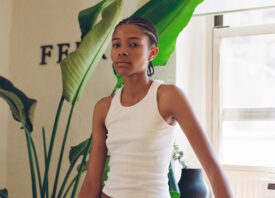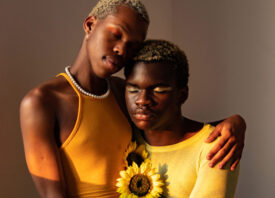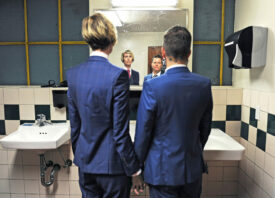Search this site
6 Pioneering Projects by LGBTQ+ Photographers

Right now, Papa De, the first non-binary queer photographer and social activist in Uganda, is advocating for equality and justice in the wake of the passing of a shocking and inhumane anti-LGBTQ+ bill. In this collection of stories, we revisit the work of artists telling vital stories at a time when human rights remain under threat around the world. From Lindsay Perryman’s vibrant zine to Michael Young’s creative collages, we invite you to explore the work of six LGBTQ+ photographers.

Zine Celebrates African American Masculine Women In The LGBTQ+ Community
“One day, I said to myself: ‘I want to make something that uplifts who I am as a person—and who we are as people,’” Lindsay Perryman, one of the LGBTQ+ photographers featured in this collection, tells us.
That seed of inspiration would later blossom into The Colors We Don’t See at The End of The Rainbow, a resplendent zine made in celebration of African American masculine women in the LGBTQ+ community. Perryman says, “I’ve always been a part of a community that has very little representation, and I wanted that to change through the making of this zine.”

‘I Am Womxn’: A Photographer Celebrates Power and Pride Beyond the Patriarchy
Papa De, the first openly non-binary queer photographer and social activist in Uganda, grew up surrounded by womxn—“strong Womxn, who did whatever they needed to do to take care of and raise their families.” They looked up to these womxn, but at the same time, they saw how womxn were treated unjustly.
The initial seeds that would later blossom to become the series I Am Womxn were planted at the start of the #MeToo movement. “I watched a revolution of womxn regaining their confidence and voices, even when all the odds were placed against them,” they remember now. “I watched them take their power back, both online and in real life. For the first time, it was okay to speak up.”

‘Till Death Do Us Part’: One Man’s Love Letter to His Husband
Next up in our collection of work from LGBTQ+ photographers is a project from John Paul Evans, who met the love of his life, Peter, in 1989—when legally-recognized gay marriage “seemed inconceivable.” At that time, Section 28 of the Local Government Act of 1988 prohibited the state to publish or teach material presenting homosexual relationships as legitimate.
Till Death Do Us Part, in which the couple creates their own wedding portfolio, is in many ways the photo album the photographer didn’t get a chance to have. It’s both an homage to their (now legally recognized) marriage and an exploration of the essential meanings of family, love, and home.

A Photographer Explores Male Vulnerability, Desire, and the Aging Body
Matthew Morrocco embarked on what would become Complicit, a series of self-portraits and portraits of older gay men, when he was in his early twenties. At the time, he wanted the photographs to “feel like falling in love for the first time,” that warm sunlight reminiscent of balmy days in the summertime. It’s now ten years later, and the pictures never left him.
“I wanted the work to feel effortless, soft and gentle,” the artist shared. “But making this work was never effortless. For me, making these pictures was relentless. For years, I worked finding subjects, building real relationships, earning their trust and their respect, dragging my camera and my lighting setups around the world, by myself, day after day, month after month, year after year.”

Captivating ‘Reverse Collages’ Made From Vintage Beefcake Magazines
Michael Young had been collecting vintage beefcake magazines for. while when he met David, a seller on eBay based in Los Angeles. As he ordered more magazines, David started including freebies: an extra magazine here, a gay pornography calendar there.
At first, Young didn’t know what to do with the calendars, but he held onto them and placed them in a box for safekeeping. A year later, he brought them out and took a closer look.
These calendars would ultimately form the foundation of his new series Hidden Glances. The top layer is a calendar page featuring the cut-out silhouette of a man, removed using an X-Acto knife; the bottom is a picture of a second man, viewed through the “window” created by the first.
“It’s about seeing, being seen, wanting to be seen, but at the same time, wanting to remain anonymous and still being somewhat hesitant to reveal one’s true self,” the artist says. “Throughout the images in the series, I am able to create visual metaphors of those feelings.”

A Photographer Comes Out to Her Parents and Documents the Process in Raw, Emotional Images
Rounding out this retrospective of work from LGBTQ+ photographers is a project by the London-based artist Paola Paredes. A few years ago, she sat down with her sisters to tell her mother and father, “I’m gay.” Three cameras captured the entire experience and discussion, which took place over three hours.
Although the photographer admits that it was an emotional experience, her parents were loving and accepting. In Ecuador, where less than twenty years ago homosexuality was criminalized, coming out can be difficult, and some children are disowned. For Paredes, it turned out very differently. When she showed them the pictures, the photographer’s mom and dad were moved anew; their love hasn’t changed.


